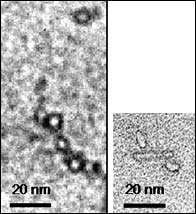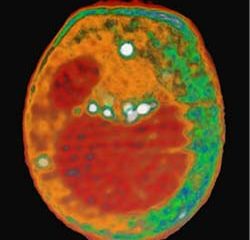Life Sciences and Chemistry
Articles and reports from the Life Sciences and chemistry area deal with applied and basic research into modern biology, chemistry and human medicine.
Valuable information can be found on a range of life sciences fields including bacteriology, biochemistry, bionics, bioinformatics, biophysics, biotechnology, genetics, geobotany, human biology, marine biology, microbiology, molecular biology, cellular biology, zoology, bioinorganic chemistry, microchemistry and environmental chemistry.

Methuselah enzymes: SEN and the art of molecule maintenance
Lab discovers way to keep short-lived catalysts active for longer than five months
Enzymes, the workhorses of chemical reactions in cells, lead short and brutal lives. They cleave and assemble proteins and metabolize compounds for a few hours, and then they are spent.
This sad fact of nature has limited the possibilities of harnessing enzymes as catalytic tools outside the cell, in uses that range from biosensing to toxic waste cleanup.
To increase the enzyme’s lon

Fatty acid pathway, glucose combine to produce triacetic acid lactone
Scientists at the University of Illinois at Urbana-Champaign have designed a potential roadmap to use a biosynthetic pathway taken from a common microorganism to produce compounds that could serve as precursors to explosives or components in everyday devices such as liquid crystal displays or anti-cancer agents.
In a presentation at the 227th National Meeting of the American Chemical Society, Illinois doctoral student Wenjuan Zha reported how the fatty acid biosynthetic pathway of Brevibact

Stoned sea-squirts
The psychoactive ingredient of the drug cannabis exerts its effects on the human brain by activating proteins known as cannabinoid receptors. Dr. Maurice Elphick of Queen Mary, University of London has uncovered the first evidence that cannabinoid receptors may not be unique to humans and other vertebrates.
The genome of the sea- squirt was recently sequenced, revealing a cannabinoid receptor gene in an invertebrate for the first time. This means that these receptors were present in the com

Autism gene found
Researchers identify first gene variant that appears to increase risk of autism in significant portion of the population
Researchers at Mount Sinai School of Medicine are first to strongly link a specific gene with autism. While earlier studies have found rare genetic mutations in single families, a study published in the April issue of the American Journal of Psychiatry is the first to identify a gene that increases susceptibility to autism in a broad population.
Approximat

Bay Area To Get Unique X-Ray Microscopy Resource
A first-of-its-kind x-ray microscope being built for the Advanced Light Source (ALS) of the Lawrence Berkeley National Laboratory (Berkeley Lab) holds forth the promise of “cat scans” for biological cells, and other unprecedented capabilities for cell and molecular biology studies. The new microscopy resource also promises a better understanding of human diseases at the molecular level and possibly new discoveries for treating those diseases. Now, researchers with Berkeley Lab and the University of

Missing gene a potential risk factor for birth defects
Research in mice examines how embryo protects itself from oxidative stress
Mouse embryos missing a gene that aids in the repair of DNA damage are at greater risk of developing birth defects, say U of T scientists. The finding has implications for research into the cause of birth defects in humans.
The gene, also found in humans, produces an important protein called ATM which senses DNA damage caused by reactive oxygen species and directs other proteins to repair it. Reactive